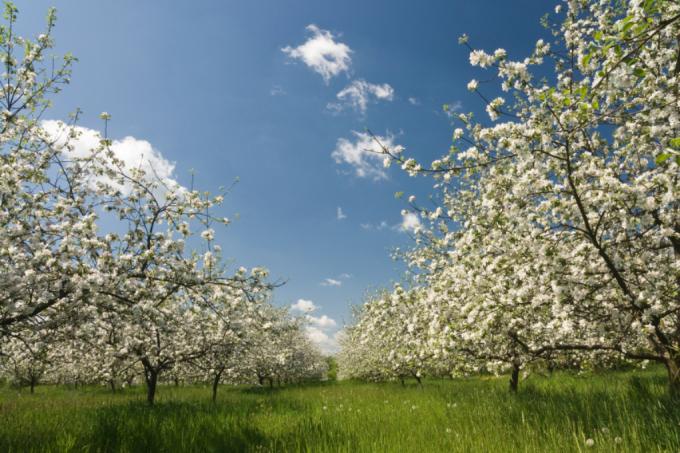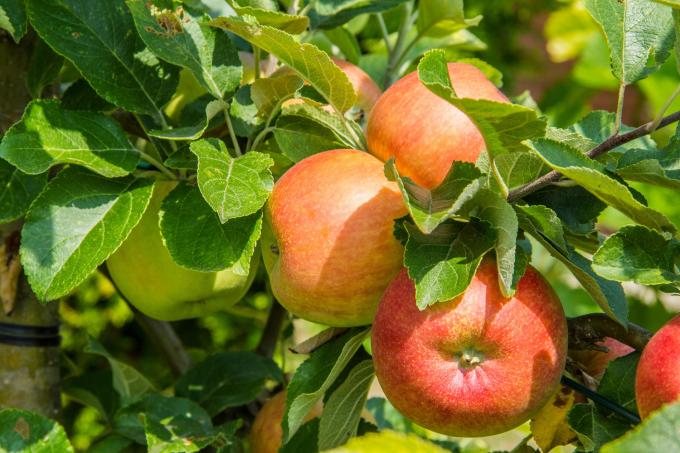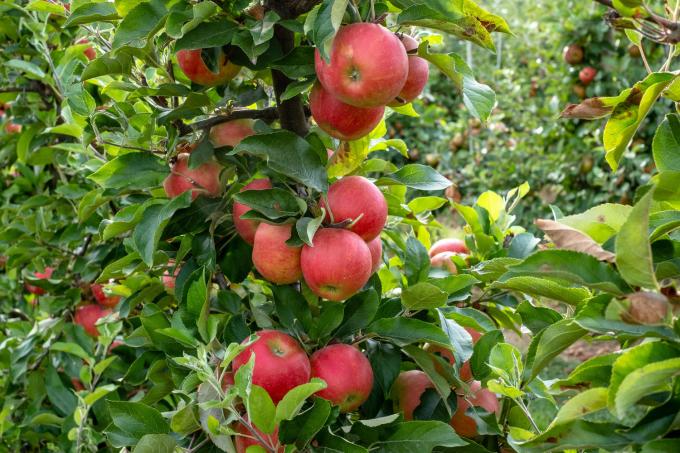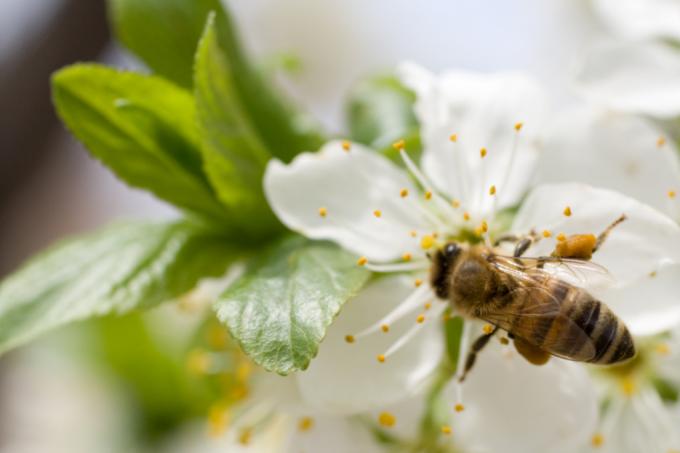AT A GLANCE
Why does the apple tree drop fruit in June?
This phenomenon is one Protective mechanism of the apple tree (Malus domestica). Often the tree has simply set too many fruits or these have been fertilized insufficiently or too late. Occasionally, June fall also occurs after late frosts.
What triggers the June fall?
Responsible for the June fall is the metabolism of the apple tree. A fertilized apple produces plant hormones and growth regulators that send signals to the tree to supply the fruit with sufficient nutrients, sugars and water.
also read
- pruning apple tree







Poorly pollinated flowers or fruits that were flown too late produce fewer hormones. Therefore, the tree only gets weak feedback from these apples. It forms a layer of cork at the base of the stem, which separates this apple from the supply. As a result, the fruit falls off in June.
Does fertilizing help against the June fall?
Especially with older apple trees that have been in the same location for several years,
can the june fall caused by nutrient deficiencies. Even in midsummer, a poorly cared for tree will still drop fruit.- A soil sample is recommended to determine which nutrients are missing.
- Afterward provide the apple tree with a suitable fertilizer in April.
- If the substrate is very exhausted, a second fertilizer should be applied in May or June.
Can drought be a cause of the June fall?
As a rule, the soil is still moist enough in June and dryness puts only a problem in exceptional cases represent. However, things look a little different when numerous large and healthy apples fall in July and August. During summer drought, the stalks of the fruit become porous and can no longer bear the weight. Here that helps regular, penetrating watering of the fruit trees, so that the tree also finds sufficient water in the deeper soil layers.
How can I tell if pest infestation is causing the fruit drop?
Because the fruits clear traces have is pest infestation pretty easy to identify. For the June case is mostly the codling moth responsible for causing the following damage:
- Maggots crawl in the young apples, on the buds and in the rind.
- Drill holes with a red border can be found in almost all fallen fruit.
- The faeces of the larvae appear as a crumbly mass.
- If you cut open the unripe apple, the flesh will be discolored.
What can I do about the June fall?
It is usually not possible to completely prevent the June fruit drop. However, there are some things you can do to reduce the number of falling apples:
- If the tree produces a lot of flowers in one year, thin them out.
- Break off the smallest fruits by hand in May.
- Pay attention to good soil quality and regularly fertilize.
- Prune apple trees professionally.
Tip
A certain amount of falling apples is normal
During fruit development, an apple tree sheds up to ten percent of its healthy fruit. One only speaks of June fall when more than thirty percent of the apples are unripe under the tree in June. In order not to lose the entire harvest, it is then necessary to find out the cause quickly and eliminate it.
